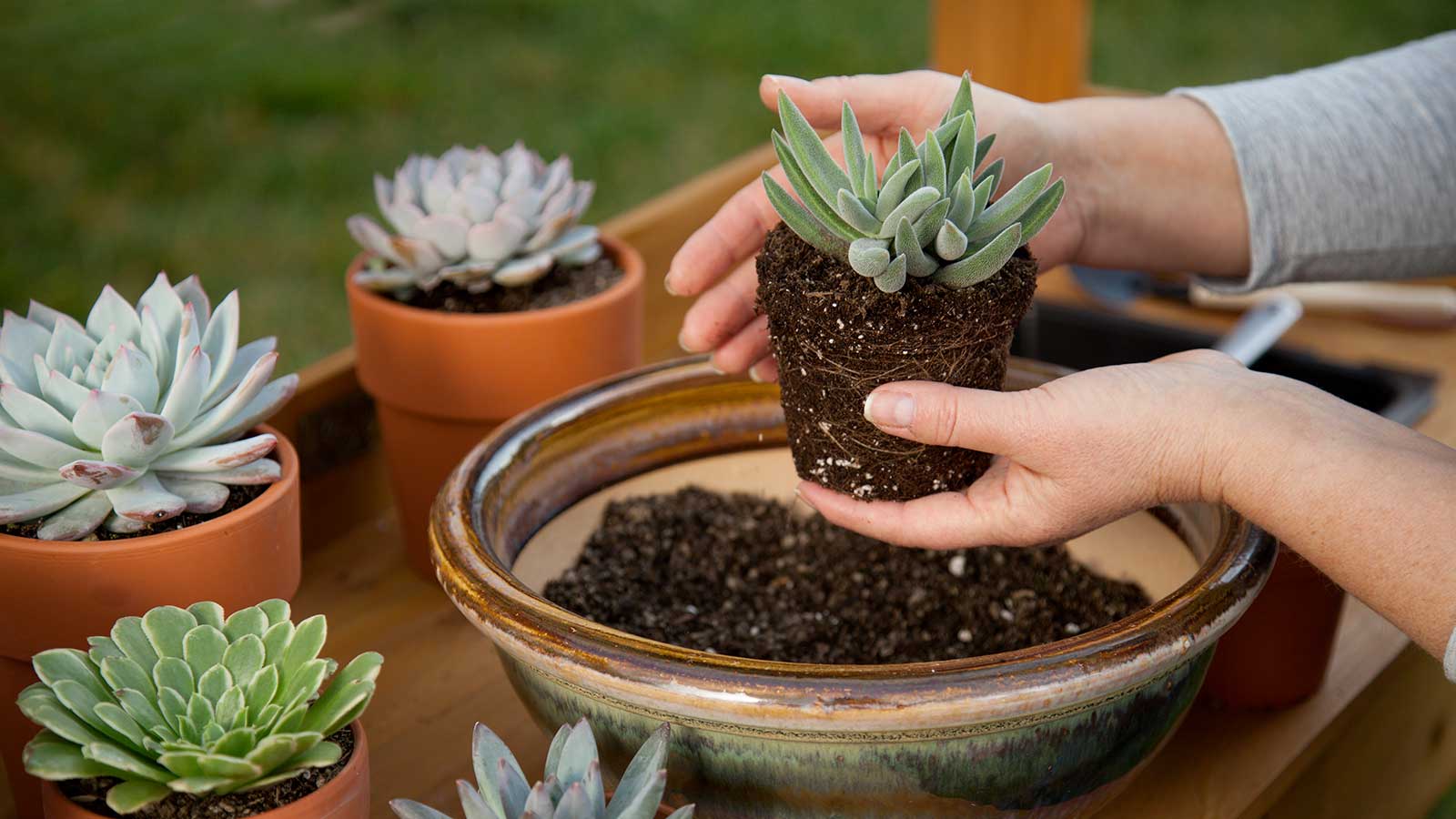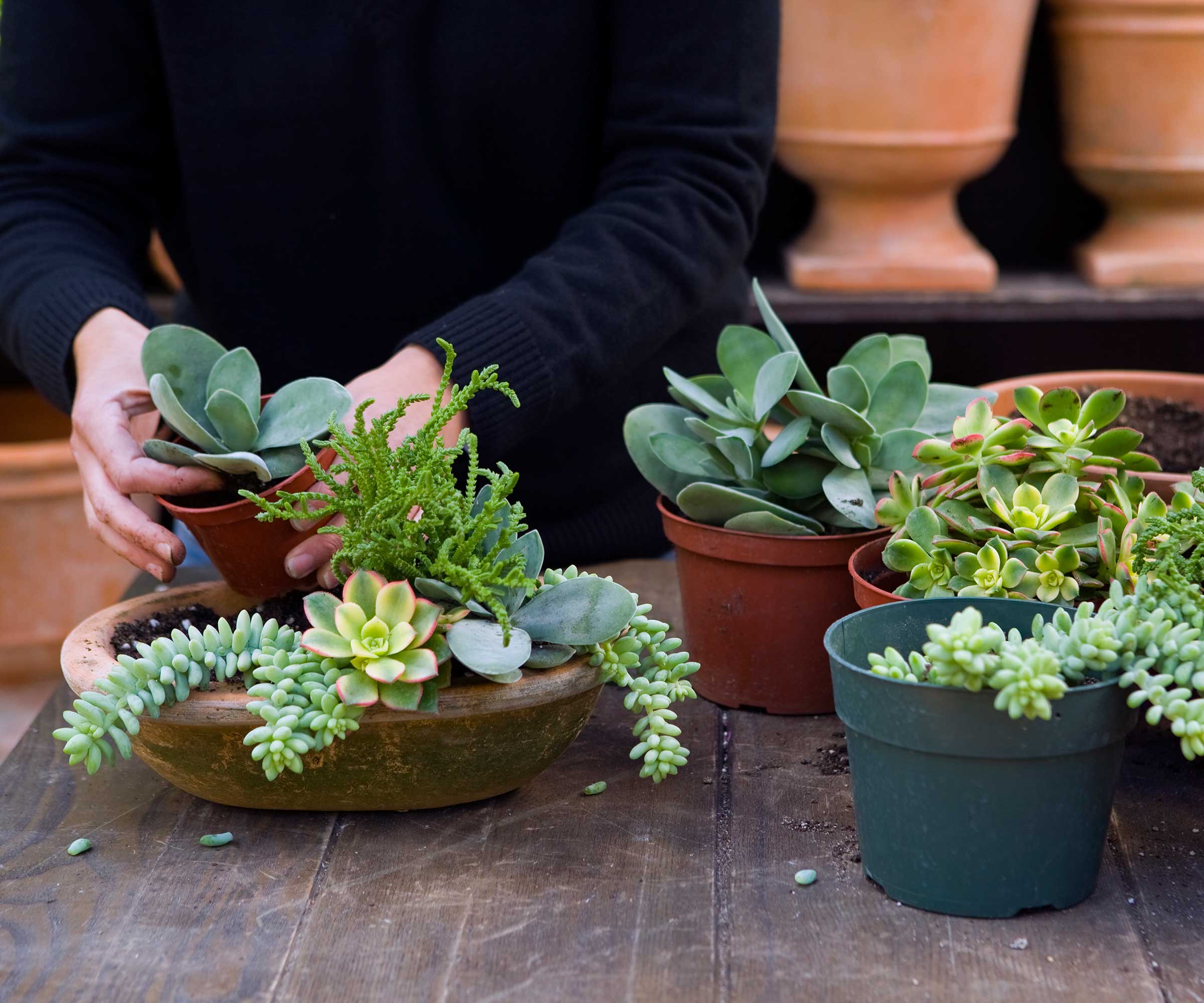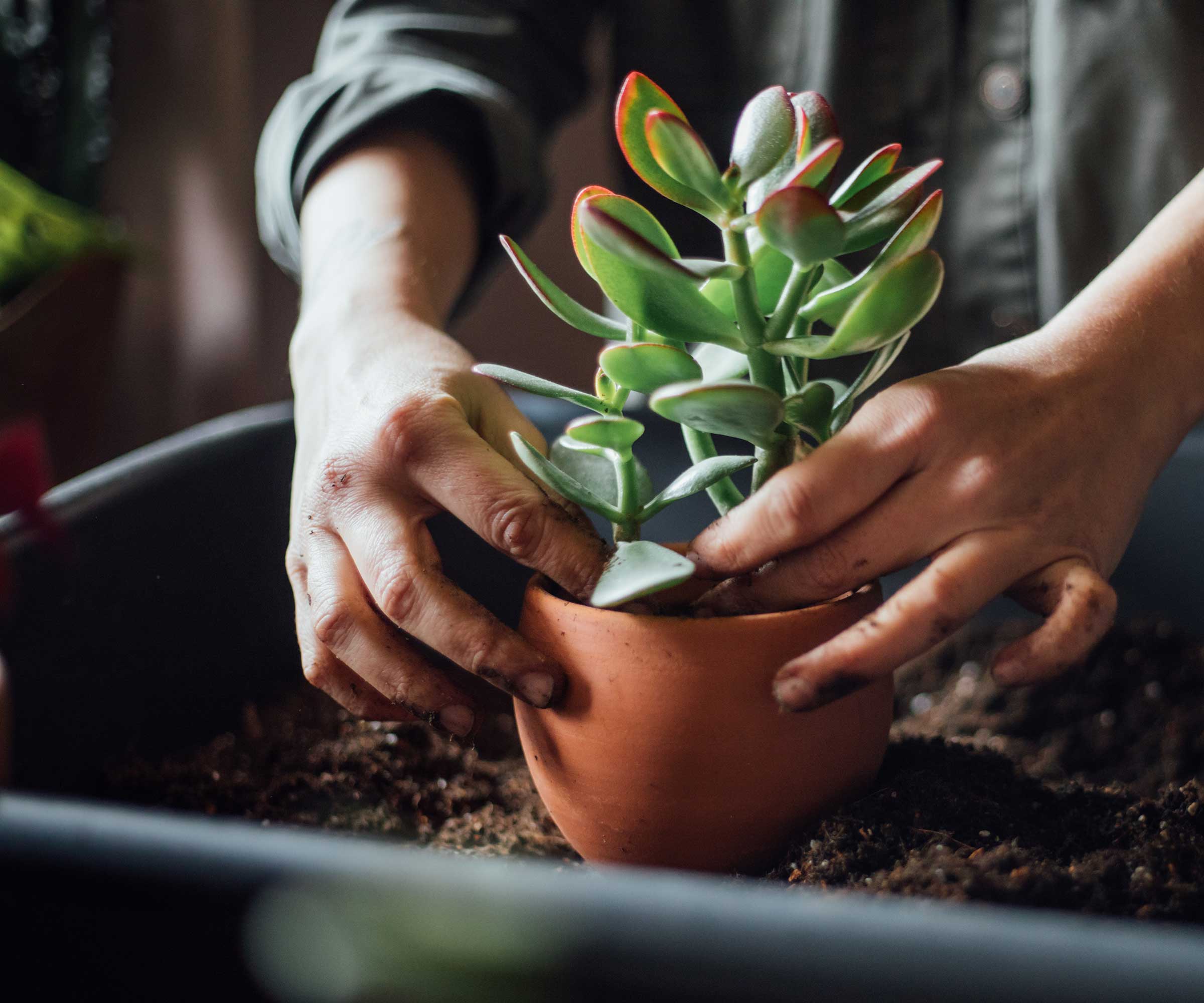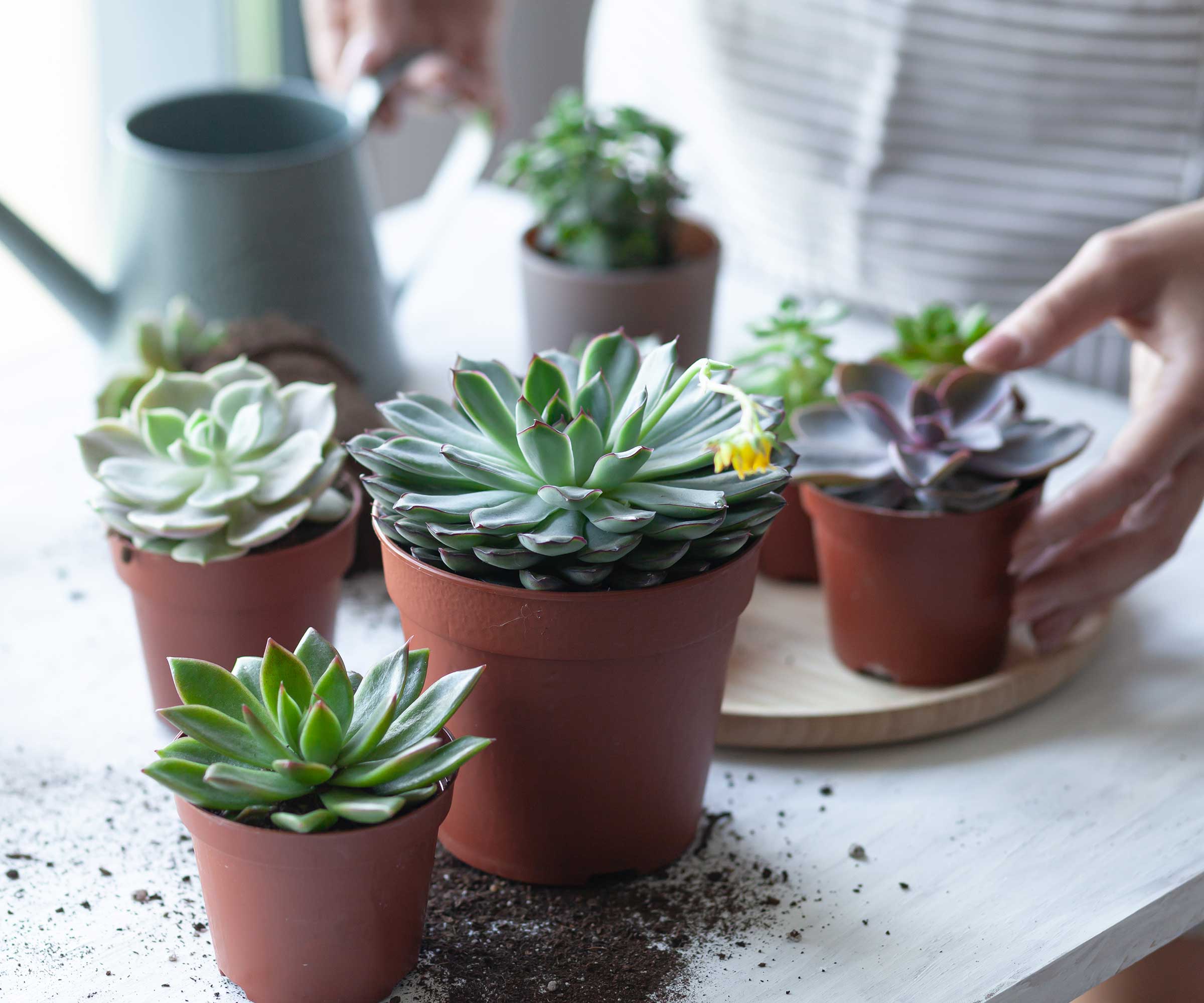
Q: I have just bought a few small succulents, including aloes, echeveria, and a jade plant. I plan to plant them together in a large, bowl-shaped container to brighten up my desk. What soil would you recommend I use?
A: Perhaps the most important thing to remember when caring for succulents is that too much water can quickly lead to problems – and even be fatal for the plants. This means, as well as turning your watering regime down to a minimum, you’ll need to select a potting soil that doesn’t become waterlogged easily.

The best potting soil for your succulents
Succulents don’t need moisture-retaining soil because they naturally grow in arid environments, and have adapted to store water in their leaves and tissue, explains plant expert Autumn Hilliard-Knapp. What's more, wet soil prevents air from reaching their delicate roots, and will cause them to rot, adds Kiersten Rankel of houseplant-care app, Greg.
Conveniently, there are many well-draining commercial mixes available that are specially formulated for growing succulents and cacti. These usually contain a combination of materials like peat moss, pine bark, coarse sand, and perlite, Autumn says.
Paris Lalicata from The Sill agrees that using a succulent- or cactus-specific potting mix is the way forward. ‘You definitely want to avoid potting your succulents with standard potting mixes,’ she adds. Most standard potting mixes for indoor plants are designed for tropical houseplants, and retain a lot of moisture, she explains.
Top tip: If you’re planting your succulents in a terrarium, a ‘drainage layer’ of gravel or small rocks beneath your layer of potting mix can be beneficial.
Shop cactus and succulent potting mixes:
This fast-draining mix includes organic peat moss, coarse sand, composted pine bark, perlite, and lime.
Rice hulls, expanded shale, coir, sand, compost, soft-wood biochar, and earthworm castings are combined in this mix.
A well-rated mix, made specifically for succulents, with sphagnum peat moss, forest products and fertilizer.

How to make your own potting mix for succulents
You can make your own mix by combining equal parts of regular potting soil and perlite, sand, or gravel, says Kiersten Rankel. This creates lots of air pockets to help with drainage, while still providing plenty of nutrients, she explains.
'Make sure your pot has a drainage hole so any extra water can escape,' she adds.
Top tip: Perlite is a lightweight material made from volcanic glass or rock. It is beneficial for improving the drainage and aeration of potting mixes. You can buy organic perlite from Perfect Plants Nursery.

FAQs
Can you grow succulents in water?
It may come as a surprise, but stem cuttings from some types of succulents can be propagated in water as opposed to soil. Ensure you change the water frequently to keep it clean and avoid getting the stems and leaves wet, as this may cause them to rot.
Can you grow succulents in sand?
Some succulents can survive in just sand, providing it is coarse enough to drain well. However, you may need to add a little fertilizer to provide enough nutrients for them. Combining sand with potting soil is generally a better approach to help your plants flourish.
Aside from getting the soil right, there are a few other important aspects of successful succulent care. These include repotting and pruning them when needed.
Remember, too, that succulents can be propagated from cuttings. So, if you love tending to your collection, it’s easy to make more for free.







